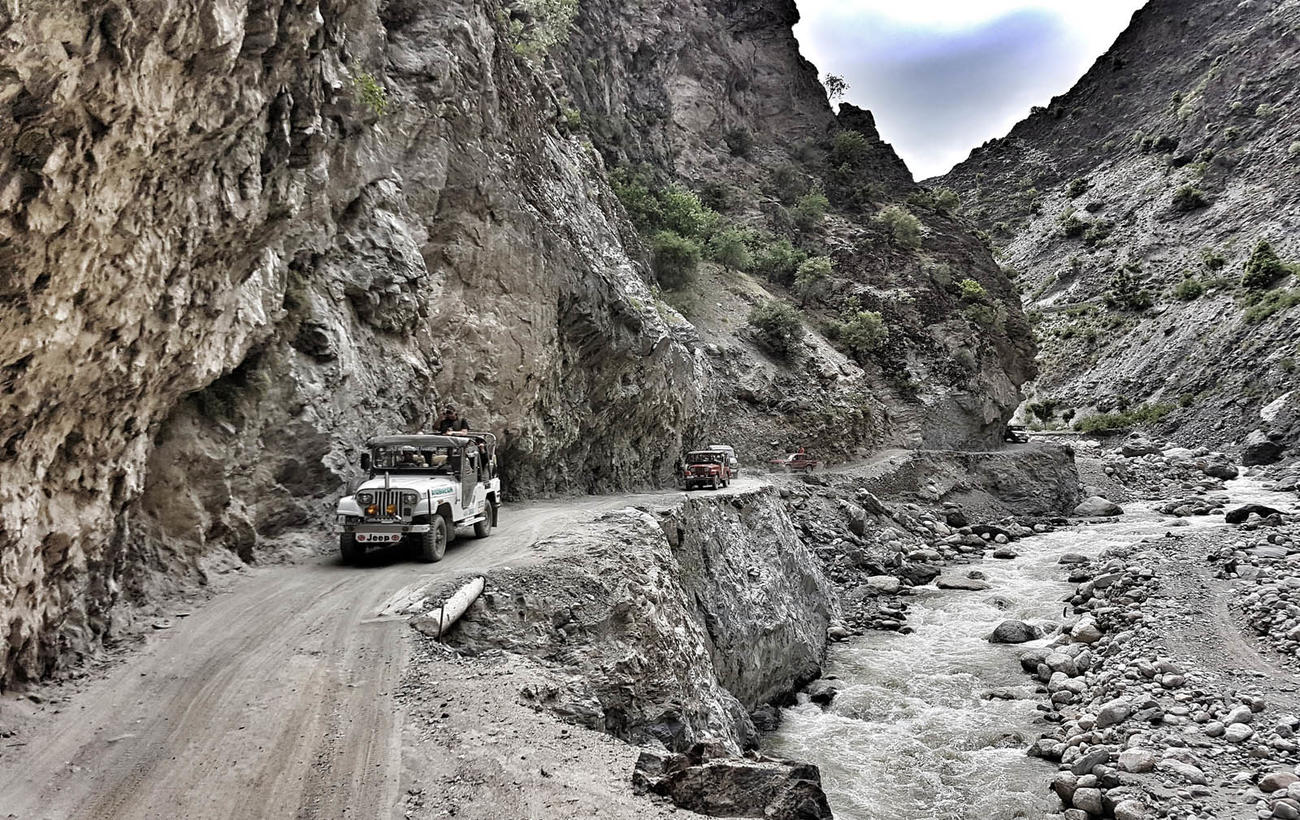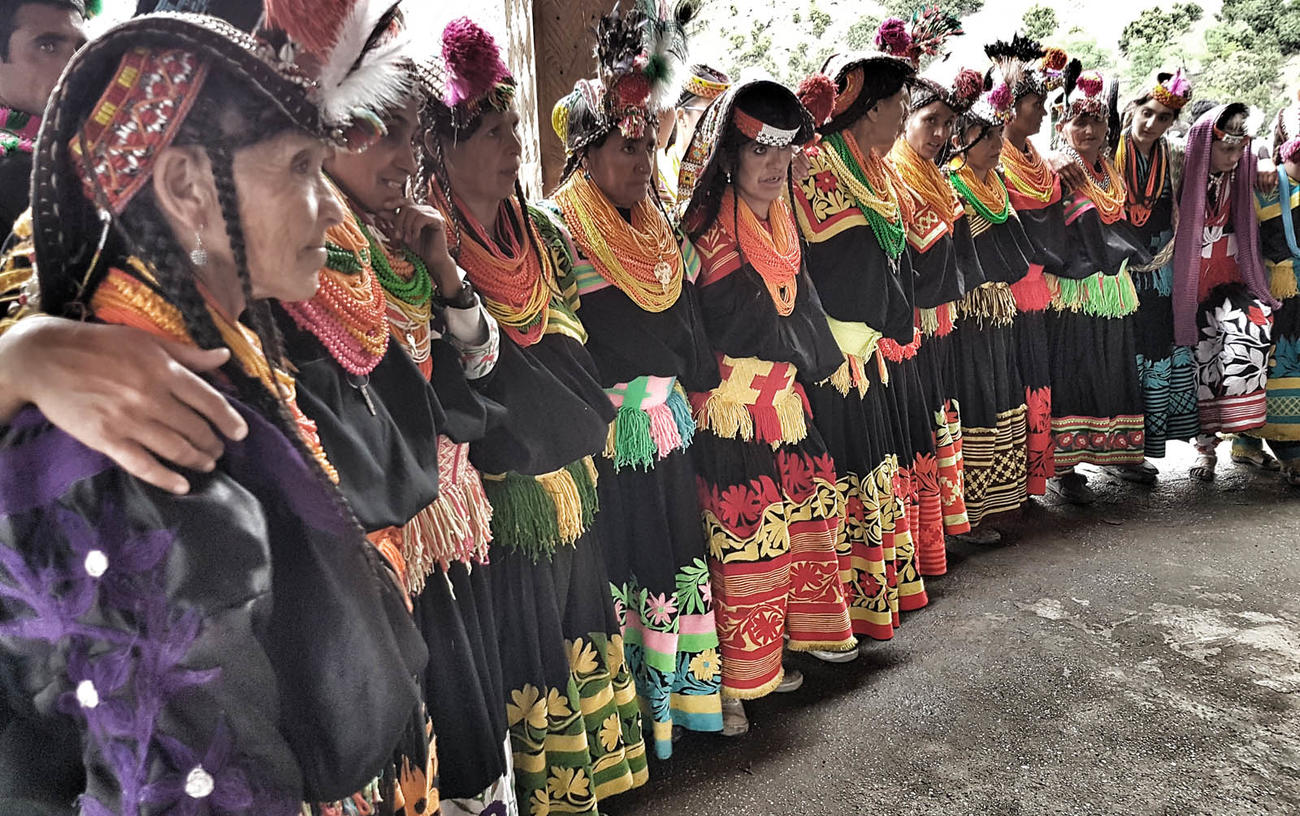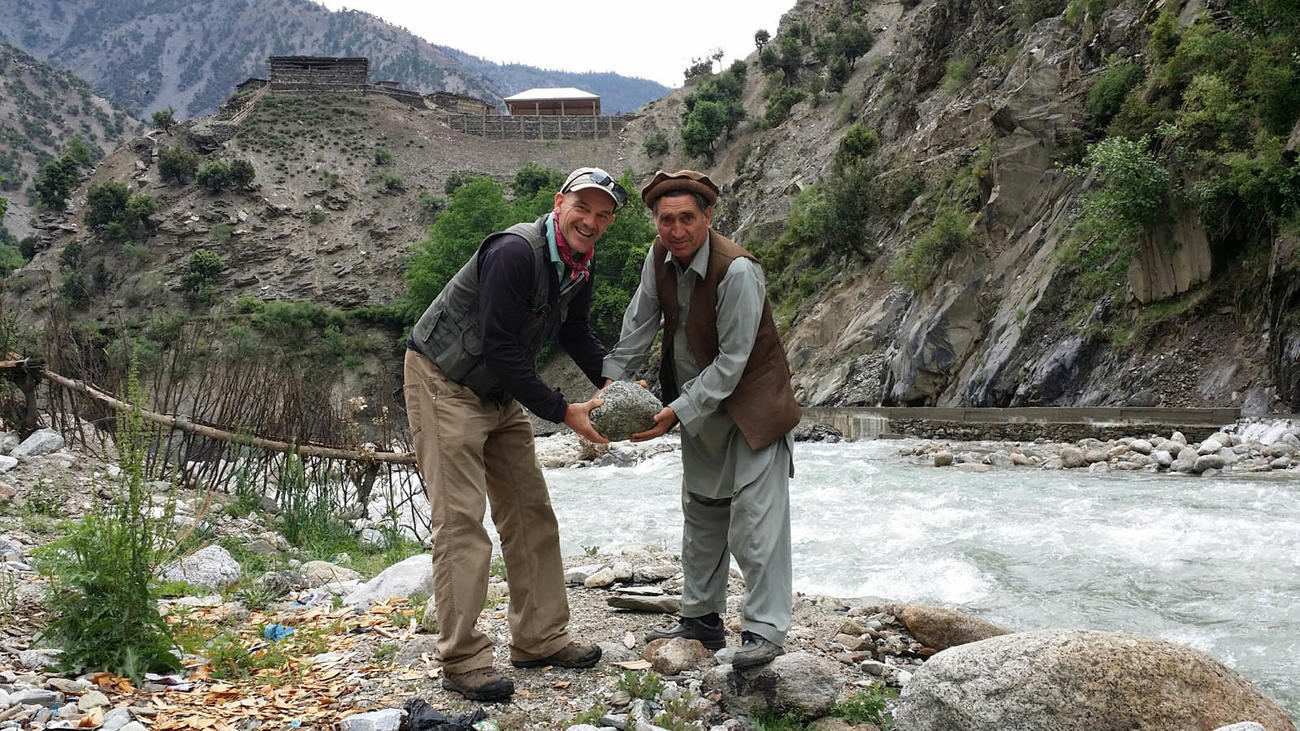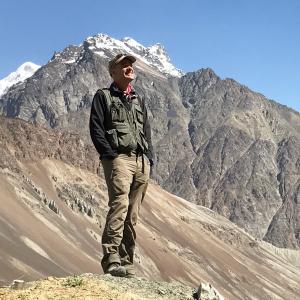After the success of our Evening of Adventure at the Royal Geographical Society back in March, where on the night we raised over £7,000 for the Kalash flood defence wall, I was excited to get back to those heavenly valleys and lay the foundation stone.
Saifullah Jan, the chief spokesperson for the Kalash, had called me six months earlier to say the situation was bad and getting worse. In fact, he felt if we didn’t do something soon the village of Balanguru – which is arguably the most authentic Kalash village in any of the three valleys – could be swept away. They had already lost five homes. With the river eating away at the bank there was no time to lose.
The good thing was I was already scheduled to lead the May trip. Coming to the Kalash valleys during their spring festival of Joshi would give me the perfect opportunity to see the damage for myself, hand over the money and lay the first stone. But first there was the festival to enjoy.

After a long drive up from the plains and over the Lowari Pass – a 3100m watershed that links Chitral to the rest of the country – we arrived in Ayun tired but in good spirits. And waking the next morning to find ourselves in the beautiful, rose-filled garden of Maqsood Ul Mulk revived us further and we spent a lazy day enjoying the sunshine, reading and going on local walks. The next day we entered the valleys of the Kalash.

Once we’d had lunch in the garden of Saifullah’s guesthouse, we walked up to the dancing area situated high on a ridge in the village of Grum overlooking Balanguru. As usual the Kalash were in fine spirits with drummers beating out a rhythm to which the old men sang and the women danced. As the last of the pagan tribes to inhabit the Hindu Kush, the Kalash are known for their festivals of dancing and singing. Joshi, which takes place between the 13th and 16th May every year, celebrates the end of winter and the beginning of the planting season and, along with the whole community, we enjoyed the celebrations which culminated in us joining the Kalash in taking hold of small branches of walnut trees and shooing the evil spirits out of the valley.

The next morning Saifullah showed us where the water was eating away at the bank, illustrating just how vulnerable the village was. In 2013 and 2015 the valley saw huge floods, which not only tore away the five luckless houses close to the river’s edge, but also destroyed the bridge that connects the village to the road. The flood had also spewed thousands of tons of mud into other buildings – including the temple of the family, Justak Khan. It had taken the village more than six months to clear up. It was great therefore that that morning I had received a text message from London saying that the Wild Frontiers Foundation had received another £3,000 for the wall and I could tell Saifullah that it wasn’t 80 foot of wall we could build but well over 100 foot. And so Saifullah and I ceremoniously laid the first rock where the new wall would start.
The Kalash are a vulnerable people who live in a vulnerable world. Over the years they have done so much for us it seems only right we can continue to do something positive for them. They will start work on the wall right away.
